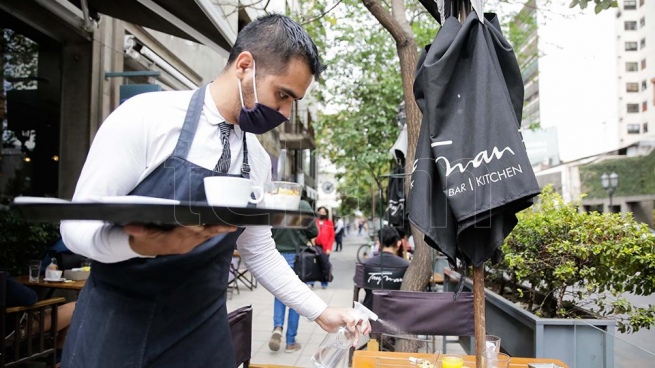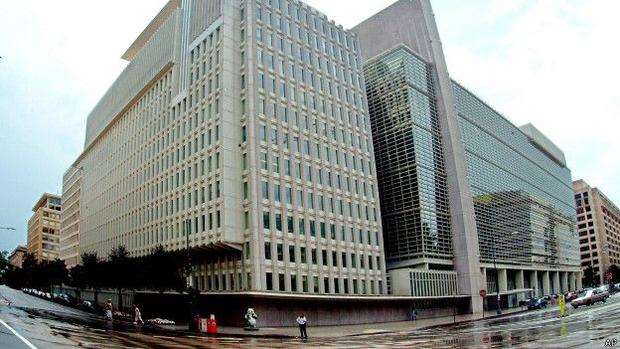The Hotels and Restaurants sector has been leading the creation of jobs for two months and displaced Construction to second place, two of the activities most affected by the restrictions of the first months of the pandemic.
The percentages exceed the general average (they tripled it in March and almost quintupled it in April) and since February they show double-digit year-on-year upward rates, according to reports from the Ministry of Labor.
“The hotel activity is one of the greatest multipliers of employment generation because it is labor intensive, much more than any industry,” the president of the Association of Tourism Hotels of the Argentine Republic (AHT), Roberto Amengual, assured Télam. .
The data is auspicious for the start of the winter holidays in the City and province of Buenos Aires, in addition to 16 other provinces in which the school break has already begunwith officials and businessmen expecting a record season, so it is discounted that the next reports of Situation and Evolution of Registered Work prepared by the labor portfolio confirm and extend the positive trend that began in November of last year.
“The high levels of reservations throughout the country project a record winter, with intense internal tourist movement and the arrival of more than a million tourists from abroad”Matthias Lammens
In any case, in the hotel-gastronomy sector they warn that there has not yet been a complete recovery from the beginning of the pandemic, if one takes into account that both activities were one of the most restricted during the Social, Preventive and Mandatory (ASPO), but also due to the abrupt reduction in international mobility, considering that a large part of the hotel industry depends on receptive tourism.
The situation was recently considered in the Tourism Commission of the Senate, whose vice president, Ana María Ianni, from Santa Cruz, highlighted the consensual work “beyond our political ideologies, knowing that tourism is also transversal to what we can individually think or feel” .
“We have to work intensely to recover those two million beds that we had in January 2020 and that today are not part of the offer, just like the hotel and restaurant owners who were unable to reopen their doors,” he said.
The Incentive Program for Tourism Investments of Small Providers was launched #InTur ???️
Registration will be available in the coming weeks. I know more in https://t.co/Jzho8rmfOc#PeopleFirst ?? pic.twitter.com/mA5X350cDd
— Ministry of Tourism and Sports (@TurDepAR) July 13, 2022
The Minister of Tourism and Sports, Matías Lammens, expressed his optimism regarding the growth of the activity, which generates “more than 650,000 jobs” through “17,000 hotel establishments and 67,000 gastronomic establishments”, according to data provided by Fehgra (Federation Gastronomic Hotel Entrepreneur of the Argentine Republic).
“The high levels of reservations throughout the country project a record winter, with intense internal tourist movement and the arrival of more than a million tourists from abroad,” said Lammens, for whom “this behavior coincides with the elimination of restrictions on circulation, advances in the vaccination of the population and the implementation of the Pre-Trip”.
The hotel-gastronomic activity had been registering a slight year-on-year increase in the first two months of 2020, with increases of 0.3% in January and 1.6% in February of that year, but the impact of the pandemic was noted with a string of thirteen falls between March of that year and the same month of 2021.
With hotels closed and bars and restaurants limited to a minimum of operations, March 2020, with its last eleven days affected by the ASPO, was the month with the smallest percentage drop (30.8% less than March 2019), while in April – the first month of full and strict compliance with the restrictions – activity plummeted 85.6%.
The gradual relaxation of the restrictions and the low statistical comparison base left by 2020, allowed the negative percentages to be reversed in April 2021, in a trend that continues to the present.
Like other activities, the sector had a explosive increase of 207.7% in April last yearwhich in the subsequent twelve months was consolidated with double-digit increases, with the exception of 6.9% in June 2021.
This growth in activity had its correlate in the employment creationalthough with lower percentages of growth and some delay in the reversal of the trend.
In this regard, if the level of activity began to improve in April 2021, the creation of jobs reversed its negative trend seven months later, although with a marked growth in intensity: in November it was the fifth sector in the generation of employment, moved to second place in December and in January and February of this year, and as of March it displaced the construction industry to occupy first place.
This lag in the recovery of employment with respect to the level of activity was explained by Amengual to Télam: “the hotel sector broke the curve from negative to positive slope, but only now is it at a relatively decent moment; an establishment needs between 55% and 60% of average monthly occupancy to recover its costs and it was as the occupancy increased that more labor began to be required”.
Looking to the future Amengual believes that the trend “should continue to be positive”although he admitted that this “depends a lot on some definitions” related to the external sector.
In this regard, he pointed out that “international demand is at risk due to the limitation of the transfer of foreign currency abroad,” but he trusted in the possibility of “articulating a joint solution.”









